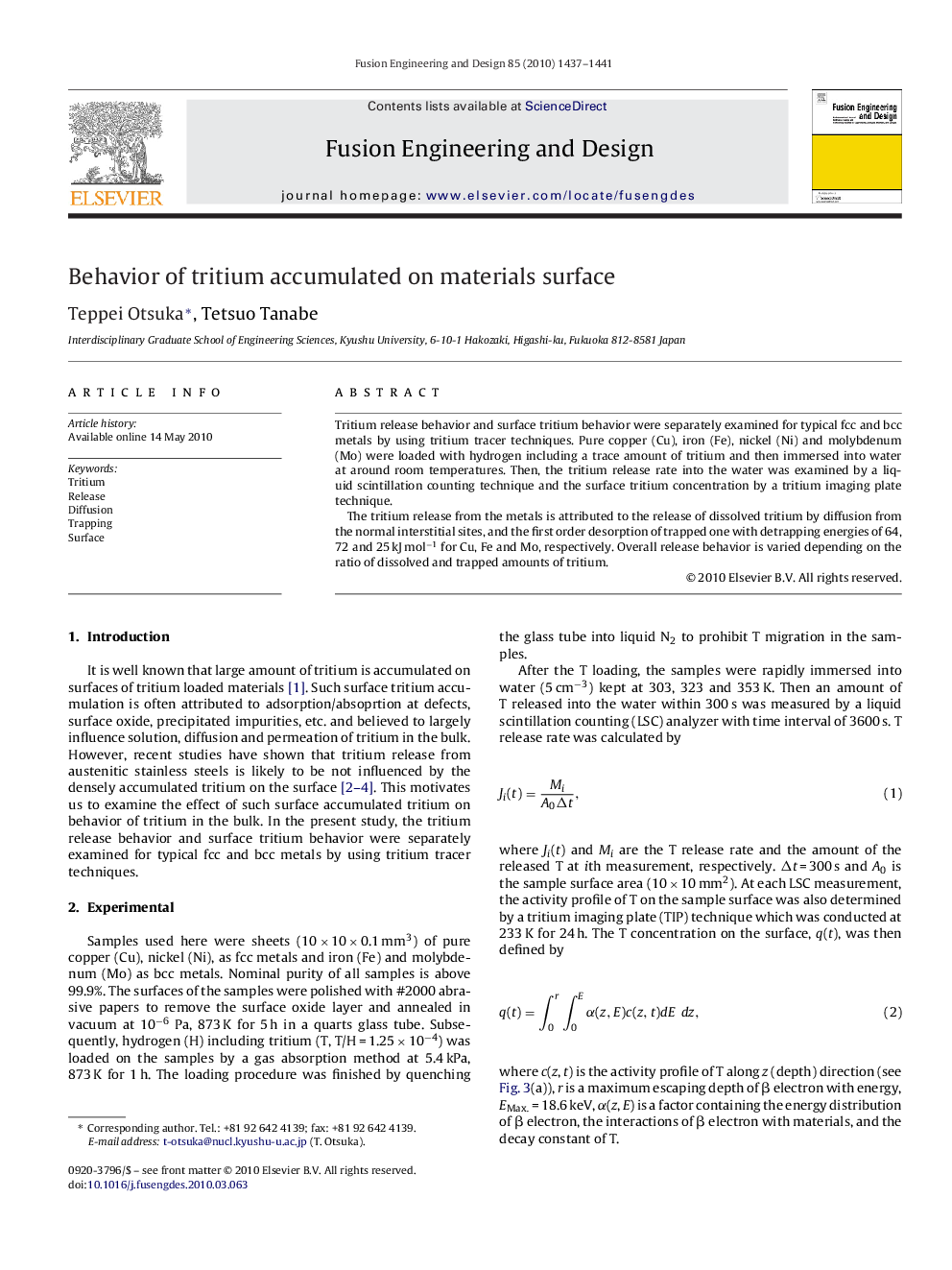| Article ID | Journal | Published Year | Pages | File Type |
|---|---|---|---|---|
| 271988 | Fusion Engineering and Design | 2010 | 5 Pages |
Tritium release behavior and surface tritium behavior were separately examined for typical fcc and bcc metals by using tritium tracer techniques. Pure copper (Cu), iron (Fe), nickel (Ni) and molybdenum (Mo) were loaded with hydrogen including a trace amount of tritium and then immersed into water at around room temperatures. Then, the tritium release rate into the water was examined by a liquid scintillation counting technique and the surface tritium concentration by a tritium imaging plate technique.The tritium release from the metals is attributed to the release of dissolved tritium by diffusion from the normal interstitial sites, and the first order desorption of trapped one with detrapping energies of 64, 72 and 25 kJ mol−1 for Cu, Fe and Mo, respectively. Overall release behavior is varied depending on the ratio of dissolved and trapped amounts of tritium.
